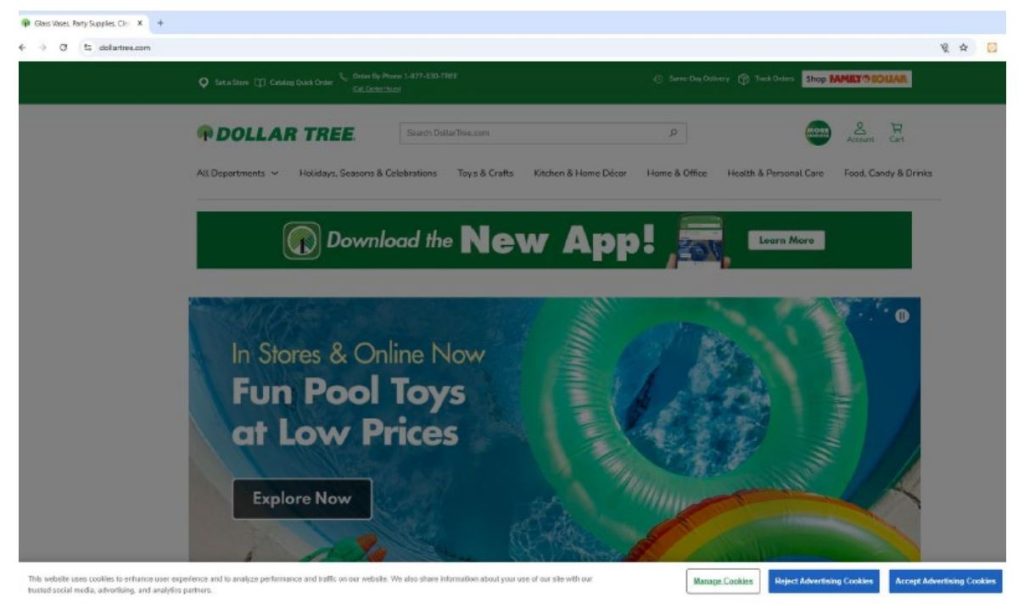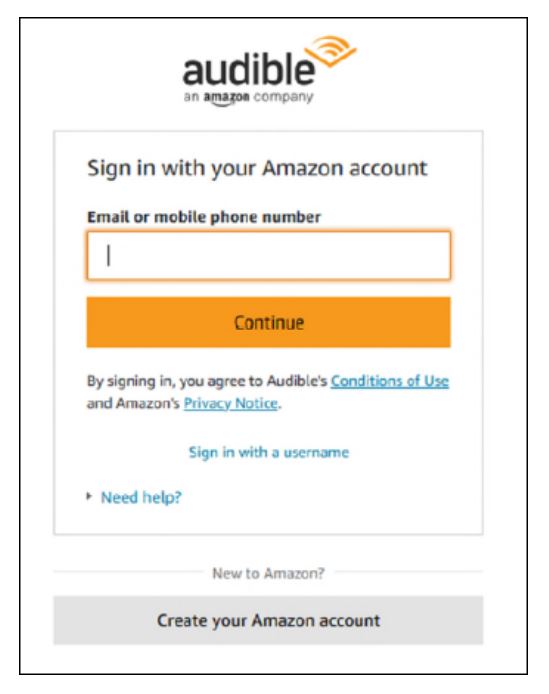Online TOS Formation Cases Make My Head Hurt
Coverage of two TOS formation cases that hit my alerts this week.
Walsh v. Dollar Tree Store, Inc., 2025 WL 2939229 (S.D. Cal. Oct. 16, 2025)
Dollar Tree required all website visitors to navigate through an interstitial cookie wall before they were allowed to browse the site:
(You can see the screen is greyed out until the consumer chooses the cookie setting).
Consumers encountering this cookie wall had three choices: “Accept Advertising Cookies,” “Reject Advertising Cookies” or “Manage Cookies.” The plaintiffs clains they rejected advertising cookies but Dollar Tree installed them anyway. That’s unfortunate if true.
Dollar Tree sought to redirect the lawsuit to its home court based on the venue selection clause in its T&Cs. Dollar Tree then engages in a mad scramble to show how consumers consented to the T&Cs. None of the arguments work.
Everyone agreed that “Dollar Tree’s T&C—which are available only via hyperlink at the bottom of its webpage and are not part of any independent pop-up, signin or check-box—are browsewrap.” The plaintiffs argued that the browsewrap label ends the formation inquiry, but the court says the legal characterization of browsewraps is not that decisive. Nevertheless, the court ultimately concludes that “the hyperlinks at the bottom of the Dollar Tree website are insufficient to provide constructive notice to these Plaintiffs of their terms.” No surprises there.
Dollar Tree also argued that its privacy policy terms incorporated the T&Cs by reference, There are two incorporation-by-reference spots:
The first reference is in the right-hand column of the 19th row of a 22-row chart; it is inconspicuously placed, not hyperlinked, and the words “terms and conditions” are not even capitalized. The second reference is more robust, capitalizing and underlining the words “Terms & Conditions (/terms)” so as to call them to a user’s attention.
However, the second reference was in a section regarding Dollar Tree’s coupon program, so consumers might have reasonably thought the T&C linkage only applied to the coupon program. As a result, the court says “Neither of these references is sufficient, without more, to incorporate the T&C into the Privacy Policy.” So Dollar Tree’s T&C ploy failed.
Here’s the point that gets me. Dollar Tree already made the crucial decision to use an interstitial to block consumer browsing of its website until consumers navigated the cookie wall. Most sites don’t treat cookie walls as impenetrable, but Dollar Tree was willing to do so. Given Dollar Tree’s choice and existing technical infrastructure, why didn’t Dollar Tree form both the T&Cs and privacy policy in that interstitial? In other words, rather than thinking about it only as a cookie wall, Dollar Tree could have just as easily reconceptualized the interstitial as a consent wall where it obtained consumer consent for all legal purposes. Dollar Tree would have had to rethink the interstitial design [FN], but this reconceptualization could have created binding T&Cs without adding any new or significant technical burdens to consumers’ site access.
[FN: one possibility is that Dollar Tree outsourced the cookie wall to a third-party vendor, so it might not have been possible to customize the vendor’s interface very much. But it would make a ton of sense and would not be very hard for third-party cookie consent vendors to design their systems to address both the privacy policy and T&Cs, not just to pick off the cookie consent but leave the other legal formation issues to another process. I don’t know what happened here, but I’ve sometimes seen privacy compliance teams not think laterally about the broader legal compliance functions. In other words, they focus only on their privacy swimlane. This can lead to incomplete piecemeal solutions that create legal coverage gaps like the one that Dollar Tree ultimately experienced.]
Crowell v. Audible Inc., 2025 WL 2939260 (W.D. Wash. Oct. 16, 2025)
This is a Meta pixels case. 🙄 The parties contest which state law applies. Audible’s TOS (called “Conditions of Use”) says that Washington law applies, which leads to the question of whether the TOS was properly formed. This is the relevant screen:
You’ll note that this is a sign-in screen, not a sign-up screen, which means that consumers already signed up somewhere else, i.e., they had an Amazon account already.
The plaintiffs conceded that this screen notifies them about the hyperlinks to the TOS. Instead, they point out that the call-to-action specifies “signing in” while the action button says “continue”–a mismatch that Chabolla and Godun suggest is fatal to TOS formation. The court distinguishes Chabolla:
Unlike the page in Chabolla, it is a single screen with a single prominent action button that users like Crowell and Smith would have repeatedly navigated to sign in to their Amazon accounts. The “Continue” button—just below text directing the user to “[s]ign in with your Amazon account”—can mean only one thing: that by clicking “Continue” the user is signing in to their Amazon account and thus assenting to the Audible COUs. Chabolla is also distinct in that it involved a sign-up page users would have navigated only once to create their membership. Crowell and Smith, by contrast, would have navigated Audible’s sign-in page every time they accessed their accounts. If there was any ambiguity the first time they signed in, it would have been clear each subsequent time they did so that clicking “Continue” meant “signing-in.”
Thus, the plaintiffs are bound to the terms. Despite this, it is trivially easy to identify a half-dozen ways that Audible could strengthen this interface, especially post-Chabolla.
More Posts on the Pixel Cases
- Another TOS Formation Fails–Carruth v. Big Little Feelings
- The Second Circuit Is Done With Meta Pixels VPPA Cases–Hughes v. NFL
- Court Rejects Trespass to Chattels Claim Over Placing Cookies–Doe v. Tenet
- Clickwrap Formed Even When a Consumer Has Limited Time to Act–Washington v. Flixbus
- Meta Pixels Case Dismissed by Second Circuit–Solomon v. Triller
- Leaky TOS Formation = No TOS Formation–Snyder v. G6
- The VPPA May Be a Dinosaur Statute, But It’s Very Much Alive in the Second Circuit–Salazar v. NBA
- Pixel Case Against Google “Jumps the Shark”–Doe I v. Google (Catch Up Post)
- Think You Understand Online Trespass to Chattels Law? Think Again–In re Meta Healthcare Pixels
- More Chaos in the Law of Online Contract Formation
- Privacy Lawsuit Based on Website Tracking by Service Provider Trimmed


